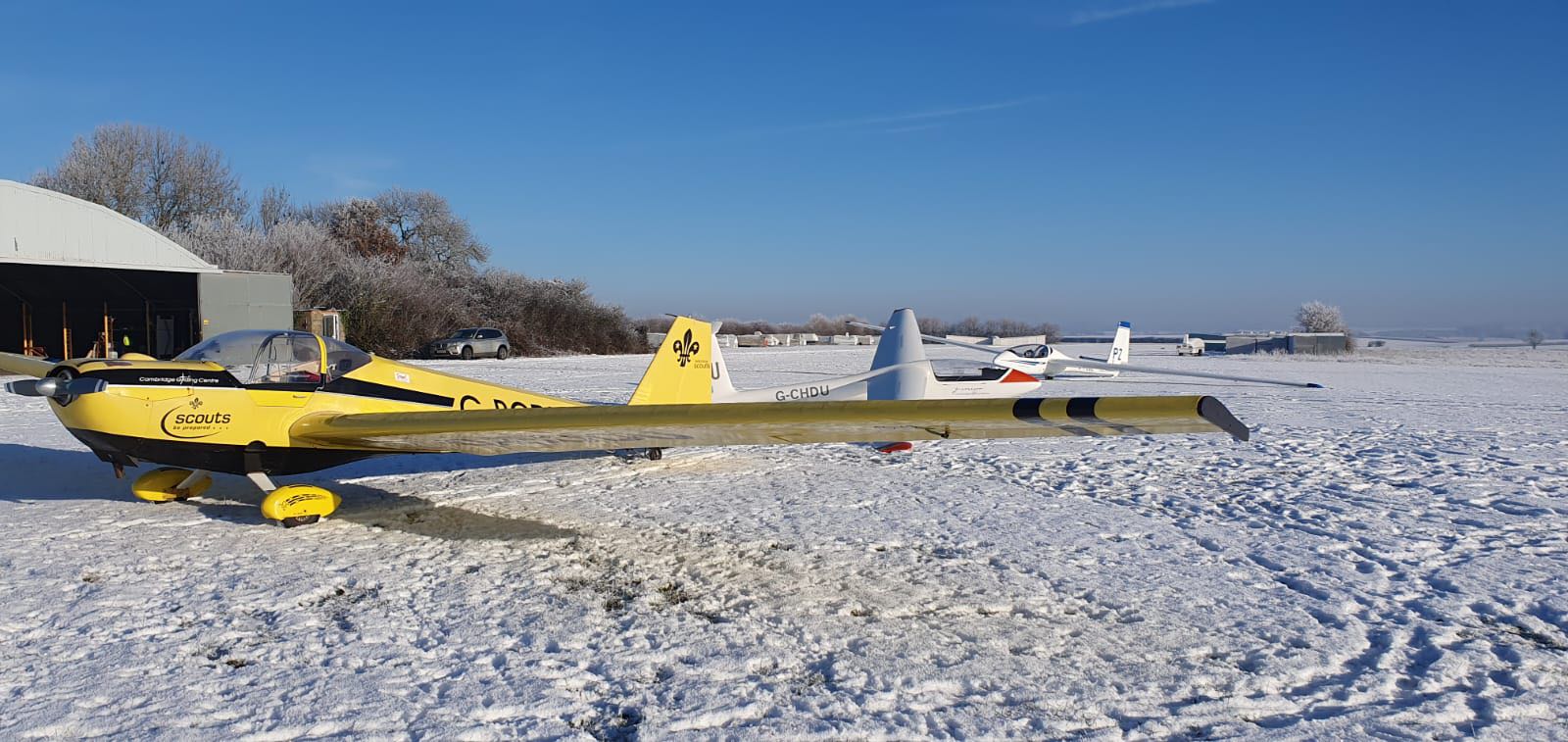Winter flying offers a unique and enjoyable experience, with crisp, clear days providing excellent visibility, especially when the sun makes an appearance. While it’s important to bundle up for the cold, the cockpit can become surprisingly warm under clear blue skies. Winter is also an ideal time to learn to fly or prepare for the spring thermals if you’re already a pilot. The airfield is typically quieter, with no launch queues and minimal aircraft traffic, allowing new pilots to focus on learning with less pressure.
On particularly special winter days, such as after a snowfall, flying can still be possible, provided the weather conditions—including cloud cover, wind, and runway status—are favorable. A quick check of the runways and gliders, and you’re ready to take to the skies. Despite the chilly temperatures, the bright winter sun brings warmth, and flying under a perfect azure sky offers breathtaking views of snow-dusted landscapes, like the fields of Bedfordshire beautifully veiled in white.


